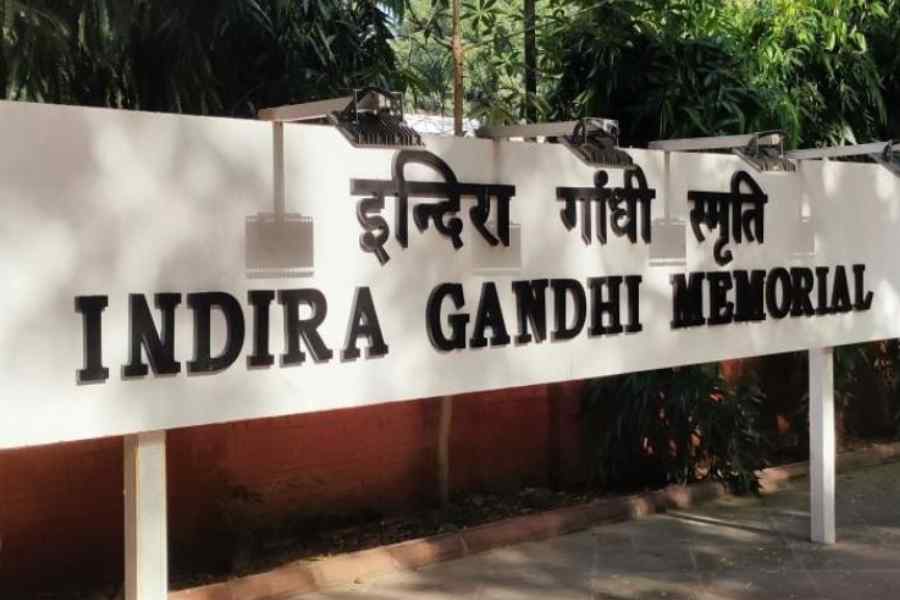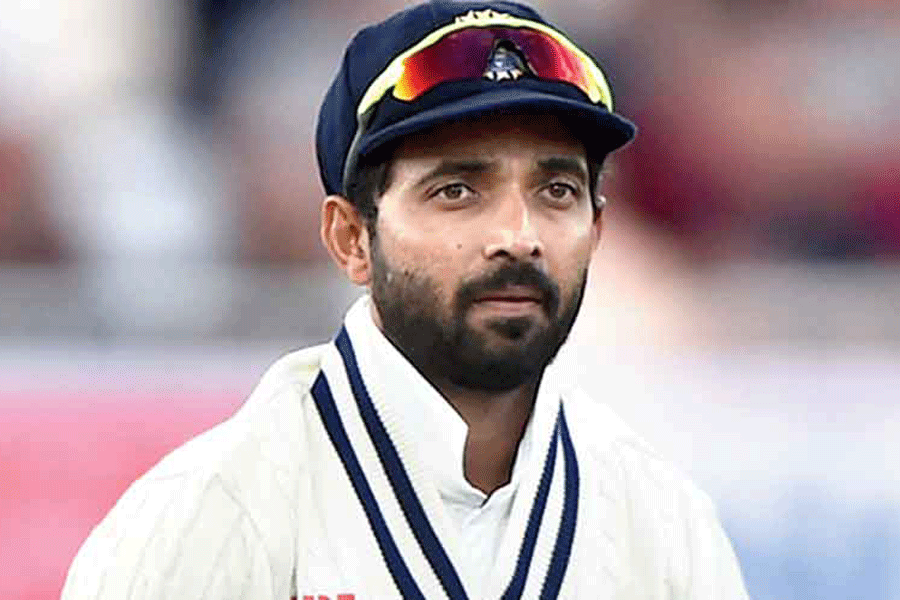Union minister's remark raises concerns over Indira Gandhi Memorial closure
Historians condemn move to close museum, call it "recolonization"

A Union minister's remark during a social media spar with a Congress MP sparked concerns that the Center will close the Indira Gandhi Memorial, another facility connected to the Nehru-Gandhi family.
The closing of these institutions is being referred to by one historian as "recolonization," and both historians told The Telegraph that they were against any such action.
Union minister Giriraj Singh commented on the X platform this month in response to Jairam Ramesh's criticism of the new Parliament House's architecture: "I demand that the #DynasticDens all over India need to be assessed and rationalized."
He continued, "To begin with, the 1, Safdarjung Road complex should be returned to the Government of India right away, given that every Prime Minister now has a space at the PM Museum."
The address is the Indira Gandhi Memorial (IGM), the home of the assassinated former prime minister on October 31, 1984. Possibly Delhi's most popular tourist destination, it shows the garments that were worn by Indira, her successor, and her son Rajiv at the time of their deaths. At Sriperumbudur, Tamil Nadu, where a memorial still sits, Rajiv was assassinated in 1991.
"This location is not merely where she lodged; it is also the scene of her murder. This newspaper was told by Mridula Mukherjee, a historian and former director of the Nehru Memorial Museum and Library (NMML), which is now known as the Prime Ministers Museum and Library, that "the spot where she was assassinated is marked."
"It is crucial that there be sobriety and symbolism. The current government, which makes a huge show of opposing the Khalistan movement, is discussing regaining the premises, which surprises me. This is a monument to someone who gave her life in opposition to the cause. These days, they discuss dismantling Pakistan. Indira Gandhi was the only prime minister to do so in 1971.
"It is a tiny and lovely memorial that is very popular, especially with visitors from the south," she continued. There are lines forming to honor "Indira Amma." Perhaps for that reason, they wish to close it.
The May 27, 1985, opening of the IGM was reported in this publication. The "mummified elegance" of the location was noted in the Manini Chatterjee report that appeared in the issue the next day.
The report stated that "a Norwegian Viking boat filled with pins, clips, blotters, and erasers, as well as a pair of spectacles that she must have set aside before leaving that morning, a diary, and a bunch of odds and ends" were artistically arranged on her table.
The guides maintain that nothing has changed from October 31 and that everything has been maintained as it was. But the smell of new paint and a fresh coat of whitewash give the mummified elegance a sinister quality.
"In the meticulously tended garden, Indira Gandhi truly comes to life." She planted a chorizia tree in 1966 and it sits in the center of the lawn, where she spent as much time as possible playing with her grandkids. She personally oversaw the tree's rehabilitation when it unexpectedly began to exhibit signs of sickness and disintegration a week before she passed away. Even though its trunk is cracked, the tree is still standing, and one lonely Chinese lantern hangs there, fluttering in the afternoon wind as a reminder of better days.
On the Teen Murti property, the Pradhanmantri Sangrahalaya, also known as the PM Museum, opened its doors last year. Jawaharlal Nehru's Teen Murti home, where Indira's father lived, has been transformed into a stand-alone "house museum" honoring the nation's first prime minister. The new PM Museum, which is situated behind it, has been connected with it.
Last month, the organization changed its name from NMML to Prime Ministers Museum and Library. At the gate, there are large obelisks behind which are placed guard posts. This has altered the facade's elegant and simple appearance.
This publication was told by historian and museum specialist Sudeshna Guha, who teaches at Shiv Nadar University in Greater Noida, Uttar Pradesh, that "the PM Museum is a glaring aberration for a country that glorifies its democratic credentials."
Due to the need for increased access to institutional space and collections as a result of decolonization, museums across the globe are becoming active research spaces. There is a conspicuous paucity of research in the Pradhanmantri Sangrahalaya. Most object labels do not even include the acquisition date, therefore they are not very informative. The museum's modern technologies and gimmicky appearance belie their own lack of content.
"Institutes are being brutally dismantled in the name of decolonization," the speaker continued. Reclaiming memorial areas and altering Delhi's geography is actually recolonization for political purposes rather than decolonization. Removing monuments from the landscape confirms the acts' imperialisms rather than the decolonization process.
Lal Bahadur Shastri is the only prime minister, aside from Nehru and Indira, to have a house museum in the nation's capital. Private trusts are in charge of running the Shastri and Indira museums. The IGM Trust and two other Nehru and Rajiv-related trusts were taken off the list of organizations to whom donations are tax-exempt by the Center this year.
"The Nehru memorial at Teen Murti House appears to have followed an earlier pattern," Guha continued, referring to the Lal Bahadur Shastri Memorial that was built at his home. This home museum embodies Shastri's vision for the nation.
"A library was also established alongside the Teen Murti, which the Pradhanmantri Sangrahalaya has made an effort to totally eclipse. It adheres to a more traditional model of museum construction, in which a repository is a museum that houses a library and archives related to the collections.
"One such example in South Asia is the Varendra Research Museum and Library, established in 1910 in Rajshahi, Bangladesh."
"Indira Gandhi passed away at home, and this serves more as a memorial," she continued. These so-called "house museums" dedicated to Shastri and (Indira) Gandhi educate us about the various histories and decolonization politics of a postcolonial state. There is no need to take them apart. In actuality, doing so is a blatant waste of enormous sums of money.
Architect and cultural conservationist A.G.K. Menon was critical of some of the Center's initiatives in this area, notwithstanding his opposition to the idea of converting past Prime Ministers' mansions into museums.
According to the co-founder of the Indian National Trust for Art and Cultural Heritage, house museums appear to be superfluous instances of hero worship. The PM Museum ought to be adequate.
"What has transpired at Teen Murti is regrettable," he continued. The administration is attempting to impose its will on history. A PM Museum should exist, of course, but it did not have to be constructed adjacent to a historically significant structure. In the same way, the Central Vista project is being carried out.
2019 saw the announcement of the Central Vista Redevelopment Project, which will see the relocation of Union government offices into new structures along Kartavya Path. The National Museum, which is now located on Janpath, will relocate to the North and South Blocks and be renamed Yuge Yugeen Bharat.
Rejection Before the new museum opens in 2025, legislators, professors, and students have criticized the National Museum's anticipated closure and the relocation of its vast collection to godowns.
Except for the headline, this story has not been edited by Press Time staff and has been published from a syndicated feed.























































